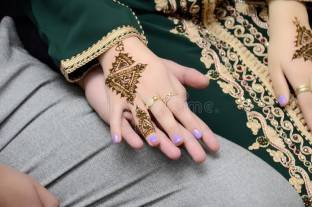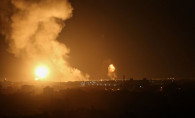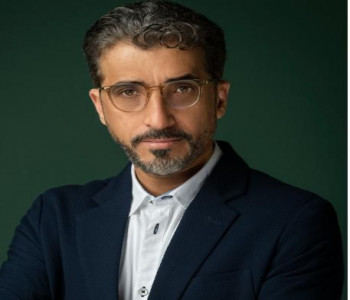Strong return of camel racing in Egypt: Sign of restoring stability, security
Strong return of camel racing in Egypt: Sign of restoring stability, security
By Marwa Yahia
Camel races, among the most famous traditional sports in the Arab world, have restored their glory after more than a decade of suspension, in a sign of restoring stability and security in Egypt’s border provinces.
Last week, a trial camel race took place in the Red Sea resort of Sharm El-Sheikh in preparation for the second edition of the Egyptian-Emirati Camel and Heritage Championship that will kick off in early March. The three-day event hosted nearly 3,000 spectators, including many tourists, Al Gomhuria newspaper reported in its weekly edition on Thursday, January 19.
Over 941 feddans (nearly 394.800 hectares), at least 940 camel racers representing 22 tribes from 17 Egyptian governorates participated in the trial event on a track renovated based on the international criteria in terms of logistics and services that are provided for the animals, racers and visitors.
South Sinai Governor Khaled Fouda was optimistic about the March race, thanks to the comprehensive development of the old track after advancing a vet hospital, preparing 40-50-meter wide barns for accommodating and training camels, and adding two computer-equipped rooms for controlling and supervising the race and the arbitrators, according to Al Gomhuria.
Fouda hailed the United Arab Emirates for broadening camel races in Egypt by providing expertise, tools, and a distinct breed of horses, which constitute a pillar for increasing camel races in the country, which date back to the pre-Islamic era, when tribes organized races to show off the strong camels they owned
However, the races stopped in the Sinai Peninsula in northeastern Egypt in the aftermath of the 2011 uprising due to the rising clashes between the Egyptian army and terrorist groups.
Terrorism the main reason behind hiatus
Waves of anti-security terrorist attacks increased after the army-led ouster of late President Mohamed Morsi, an affiliate of the outlawed Muslim Brotherhood, amid mass protests against his one-year rule and his group’s intervention in running the country.
Later in 2014, militant groups in Sinai pledged loyalty to then-ISIS leader Abu Bakr al-Baghdadi by announcing Wilayat Sinai, or Sinai State, which became Egypt’s most active insurgent group and has been linked to deadly attacks across the country. The group claimed responsibility for most of the attacks in North Sinai and other cities bordering Egypt, which killed hundreds of police and army men.
The attacks then crept into the capital, Cairo, and some Delta cities, where some churches were bombed, leaving civilian victims.
In February 2018, Egypt declared a nationwide comprehensive security operation to uproot terrorism, but the major counter-insurgency operations were focused in northern Sinai and the Western Desert bordering Libya. Since then, Egypt has expanded security control over its vast desert areas where camel racing is held.
Racetracks gradually welcome races under UAE’s auspices
Gradually, a few events had been restored. In 2020, Egyptian President Abdel Fattah El Sisi and then-UAE Crown Prince Mohamed bin Zayed Al Nahyan (currently president) opened the Egyptian-Emirati Camel and Heritage Championship, or Sharm El-Sheikh Arab Heritage Festival, an international camel racing event in the Red Sea city of Sharm El-Sheikh, sending a clear message that the city battered by terrorist raids is safe and stable.
Camel racing witnessed a boom in 2022 with the presence of international visitors and camel racing fans. In August, in the northern coastal city of El-Alamein, a camel race occurred with the participation of 900 camels from all governorates of Egypt. In September, another race took place in North Sinai’s city of Al-Arish, where tribesmen offered several art and sports activities.
A two-day camel race took place on October 2-3, 2022 in New Valley Governorate, in the southwest of the country, with the participation of 15 tribes and 160 camels from different areas, including North Sinai, New Valley and some Delta governorates.
This was the first race in New Valley since its racetracks went out of service in 2017 after the governorate witnessed severe terrorist attacks targeting police checkpoints and security premises.
Preserving historical heritage
“Camel races are channels for maintaining the heritage of ancestors and imprinting it in the minds of our young sons,” Eid Al-Muzaini, head of the Egyptian Camel Federation (ECF), told Jusoor Post.
For the Bedouin tribesmen, the race means joy, pride, and fair competition among famous Egyptian tribes, Al-Muzaini said, adding that the winning tribe receives a trophy of leadership.
Normally, the ECF, in cooperation with Egypt’s Ministry of Youth and Sports, organizes 20 local and international camel races every year, he said, adding that there are 11 camel clubs in nine governorates, mostly on the Egyptian borders.
A ten-year-old cameleer, Ahmed Eid, who finished the recently held New Valley camel race, was applauded and cheered by the crowds for his performance. “I am not scared of riding a camel, because the animal is smart enough to know the professional cameleer,” the young boy said in a comment to Jusoor Post’s correspondent during the event in New Valley.
“Light and young bodies can better lead racing camels so as not to hinder their speed,” the young boy said, adding that he has been training every day since he was seven years old.
Eid’s tribe, Al Shararat, won seven rounds and was gifted 400,000 Egyptian pounds (approx. $13,400).
The popular sport saw camels compete at speeds of up to 64 kilometers per hour on tracks specially built for the race. In jeep vehicles running outside the racing lines, camel owners direct the animals with remote-controlled handles linked with an electronic chip fixed on the camels' body.
Economic revenues, reviving tourism
Races also provide economic revenues for the tribes, as the price of the winning camel could reach 1.5 million Egyptian pounds (approx. $50,265), while an ordinary camel is sold at 40,000 Egyptian pounds (approx. $1,340), according to Mohamed Hamid, head of the New Valley Camel Club.
Racing is also an important method for reviving tourism, especially from Arab and European countries, as visitors attend the races and then ask for desert safaris and camel rides, Hamid added.
“Camel races caused an increase in the camel prices in Egypt,” Hamid said, noting that Egypt imports 3,000 camels per week from Sudan. There are several kinds of camels, but only Al-Anafi and Al-Bishari are famous for their racing performance, he added.
Egypt’s minister of youth and sports, Ashraf Sobhy, said that “camel races enjoy the support of the political leadership to be placed among the top sports.”
Such races play an important role in strengthening desert tourism and attracting many tourists, he added, referring to New Valley, which is Egypt’s largest governorate and full of archaeological and natural sites.







